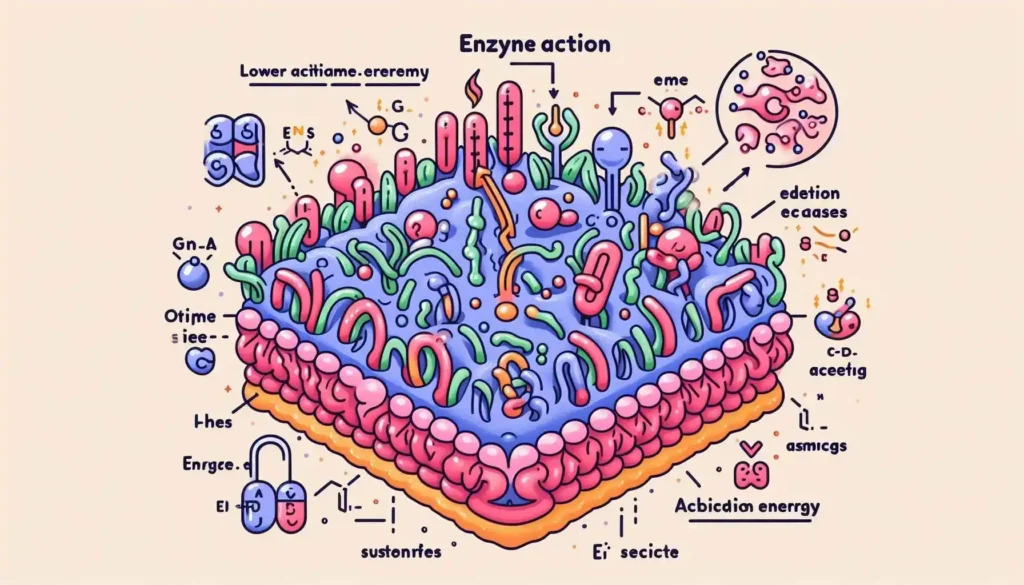Table of Contents
Dear students, In topic 2 we cover Branches of Biology and today we will write about Linkage of Biology With Other Fields of Study.
Linkage of Biology With Other Fields of Study
1. Biophysics 🧬⚛️
Topic Explanation:
Biophysics combines the principles of physics and biology to understand how biological systems work at a molecular and physical level. It looks at processes like energy transfer in cells, the movement of molecules, and the structure of biological membranes.
- Example: Studying how proteins fold or how cells generate energy using ATP (adenosine triphosphate).
Key Points and Definitions:
- Biophysics: The study of biological processes using the principles and techniques of physics. 🔬⚡
- Focuses on the structure of molecules, energy processes in cells, and how forces like gravity and pressure impact biological functions.
- ATP: A molecule used by cells for energy, studied in biophysics. 🔋
Important Diagrams:

Summary of the Topic:
Biophysics links biology and physics by studying the structure and energy processes in cells. It helps us understand the physical forces at play in biological functions, such as muscle contraction and protein folding.
Interactive Tips for Memorization:
- Mnemonic for Biophysics: “Biology + Physics = ATP” – Remember that biophysics is all about energy and structure in living organisms, powered by ATP! ⚡
2. Biochemistry 🧪🔬
Topic Explanation:
Biochemistry explores the chemical processes that occur within living organisms. It focuses on the chemical substances and reactions that support life, such as metabolism, enzyme activity, and DNA replication.
- Example: Understanding how enzymes speed up chemical reactions in the body.
Key Points and Definitions:
- Biochemistry: The study of chemical reactions and substances in living organisms. 🔬⚗️
- Metabolism: The set of life-sustaining chemical reactions in organisms. 🍽️
- Enzymes: Proteins that act as biological catalysts, speeding up chemical reactions in the body. 🧪⚡
Important Diagrams:

Summary of the Topic:
Biochemistry bridges biology and chemistry, focusing on the chemical processes that drive life. From metabolism to DNA replication, it helps us understand how molecules interact to keep organisms alive.
Interactive Tips for Memorization:
- Mnemonic for Biochemistry: “CHEM for life” – Think of chemistry as the fuel for biological processes like metabolism! 💡
3. Biogeography 🌍🐾
Topic Explanation:
Biogeography studies the distribution of living organisms across different regions of the Earth. It looks at how geographical factors like climate, terrain, and human activities affect where species are found.
- Example: Studying why polar bears live in the Arctic but not in the tropics.
Key Points and Definitions:
- Biogeography: The study of the geographical distribution of species and ecosystems. 🗺️
- Examines how climate, physical barriers, and human influence shape biodiversity.
- Biodiversity: The variety of life in a particular habitat or ecosystem. 🌳🦋
Important Diagrams:

Summary of the Topic:
Biogeography combines biology and geography, exploring how geographical factors influence the distribution of species. It helps explain why certain animals or plants are found in specific regions and not others.
Interactive Tips for Memorization:
- Mnemonic for Biogeography: “Geo = Earth, Bio = Life” – Remember that biogeography is all about where life exists on Earth. 🗺️🌍
4. Biostatistics (Biometry) 📊🔢
Topic Explanation:
Biostatistics involves using statistical methods to analyze biological data. It helps in making sense of data from experiments, understanding trends, and making predictions about populations.
- Example: Using statistics to analyze the effectiveness of a new drug based on patient outcomes.
Key Points and Definitions:
- Biostatistics: The application of statistics to biological research. 📊
- Helps in analyzing data, identifying trends, and drawing conclusions from biological experiments.
- Mean, Median, Mode: Statistical measures used to summarize data. 🔢
Important Diagrams:

Summary of the Topic:
Biostatistics links biology with mathematics by applying statistical techniques to biological research. It helps scientists analyze complex data, make predictions, and validate findings.
Interactive Tips for Memorization:
- Mnemonic for Biostatistics: “Stats for Bio Facts” – Biostatistics makes biological data easy to understand! 📊💡
5. Bioeconomics 💰🌿
Topic Explanation:
Bioeconomics examines the relationship between biology and economics, focusing on how biological resources can be sustainably managed and used for economic benefit. It deals with issues like conservation, resource management, and environmental impact.
- Example: Studying how overfishing affects marine biodiversity and the economy.
Key Points and Definitions:
- Bioeconomics: The study of the economic aspects of biology, focusing on sustainable use of biological resources. 🌍💸
- Involves the management of natural resources like fisheries, forests, and wildlife for economic development.
- Sustainability: Using resources in a way that preserves them for future generations. 🌱♻️
Important Diagrams:

Summary of the Topic:
Bioeconomics links biology with economics, studying how biological resources can be used sustainably for economic development. It helps in understanding how to balance environmental protection with economic growth.
Interactive Tips for Memorization:
- Mnemonic for Bioeconomics: “Eco for Economic Growth, Bio for Life” – Bioeconomics is about using biology to sustain economic development! 🌱💵
Conclusion:
The linkage of biology with other fields like physics, chemistry, geography, statistics, and economics highlights the interdisciplinary nature of biology. Each of these branches helps us understand life from a different perspective, enriching our knowledge of the natural world.
Interactive Tips:
- Remembering all fields: Use this simple phrase: “Big Brain Scientists Gather Big Green Supplies!”
- Biophysics
- Biochemistry
- Statistics
- Geography
- Bioeconomics
By linking biology with other fields, we can apply scientific knowledge to solve real-world problems, from healthcare to environmental sustainability. Each field plays a unique role in deepening our understanding of life and its processes.